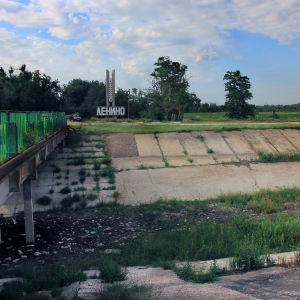Federal Water Tap, March 21: U.S. Forest Service Updates Analysis of Forests and Drinking Water
The Rundown
- The U.S. Forest Service’s Forests to Faucets program re-evaluates the connections between forests and watersheds.
- Lake Powell dipped below 3,525 feet, a level that water users in the basin intended not to breach.
- House Democrats propose the creation of a Great Lakes Authority to promote economic development and environmental conservation in the eight-state basin.
- Federal forecast shows drought conditions in the western half of the country are likely to extend at least through this spring.
- The EPA adds 12 contaminated sites, many with groundwater effects, to the Superfund
- The EPA invites the backers of a proposed reservoir in California to apply for $2.2 billion in federal financing.
- Bills in Congress address financing lead pipe removal and endangered fish in the Upper Colorado River basin.
And lastly, a Senate committee discusses updating the formula that distributes money to states for financing sewer, stormwater, and other clean water infrastructure.
“Need varies across and within the states, based on population growth or reduction, the age and condition of existing infrastructure, and the unique public health, environmental challenges, and development needs of impacted communities. It is essential to me that rural communities are treated appropriately and their unique challenges in infrastructure deployment are accommodated in any revised Clean Water SRF formula.” — Sen. Shelley Moore Capito (R-WV) on the need for potential changes in the state revolving fund allocation to account for rural areas. She made the comments during a Senate Committee on Environment and Public Works hearing.
By the Numbers
12: Severely contaminated sites added to the National Priorities List, commonly known as Superfund sites. U.S. Environmental Protection Agency-designated sites include groundwater contaminated by dry cleaners in Paden City, West Virginia; groundwater contamination from a munitions manufacturer in Cordova, Tennessee, that is a risk to drinking water wells; and heavy metals in sediment in Bear Creek, located six miles southeast of Baltimore.
3,525 ft: Elevation that Lake Powell, a Colorado River reservoir that is the nation’s second largest reservoir by capacity, dipped under on March 15. The four states in the river’s upper basin had agreed to do their best to keep the reservoir above that level, which provided a roughly 35-foot buffer before Powell reaches the point where it can no longer generate hydropower. Bureau of Reclamation officials said Powell would rise above the 3,525 threshold later this year when snowmelt enters the reservoir. But unless states begin cutting back on water use, the long-term trend is one of decline.
News Briefs
Great Lakes Authority Proposed
House Democrats from Great Lakes states introduced a bill to create a federal authority that would promote economic development and environmental conservation in the states surrounding North America’s largest freshwater system.
The Great Lakes Authority would have multiple functions. It would be a center of collaboration and support, working to coordinate state and federal economic development and job training programs in the eight-state region. The authority would also assist indebted communities, sponsor studies, and develop regional plans.
In addition, the authority would be empowered to make loans and loan guarantees through a revolving fund. Eligible projects include water infrastructure, renewable energy, and ecosystem restoration.
The bill provides $30 million for the first year and $50 million each following year.
Financing Lead Pipe Removal
A bill introduced in the House would make it easier for water utilities to finance the replacement of lead service lines on homeowner property.
It does so by not requiring utilities to assess whether a publicly funded lead service line replacement would benefit a business run out of a person’s home. The goal is to cut out red tape and speed up lead pipe removal.
The legislation was developed in conjunction with the Association of Metropolitan Water Agencies.
Endangered Fish Legislation
The House passed a bill that would reauthorize federal programs to assist endangered and threatened fish in the Upper Colorado River basin.
Studies and Reports
Forests to Faucets Update
The U.S. Forest Service updated a decade-old analysis that identified the importance of forested watershed for downstream drinking water.
The Forests to Faucets project is intended to highlight watersheds that are sources of drinking water and reveal threats such as wildfire, pollution, insects, land use changes, and climate changes that could decrease water availability.
The eastern and southern regions and California had the most watersheds with an important connection to drinking water. In general, this means large populations that use surface water.
The data is presented in an interactive map.
On the Radar
Drought Expected to Continue
Federal forecasters dry conditions to persist or worsen in the next three months in the western half of the Lower 48 — from Louisiana and the Great Plains to South California and the Columbia River basin.
Currently three-fifths of the Lower 48 is in some form of drought, the highest share since 2013.
Flood risks this spring are more limited in scope, according to NOAA’s Climate Prediction Center. The highest risk is for the Red River of the North, in North Dakota.
New Reservoir on the Horizon in California
The U.S. Environmental Protection Agency opened the door to federal funding for a new reservoir in northern California.
The EPA invited the backers of Sites Reservoir to apply for $2.2 billion from a federal low-interest loan program called WIFIA.
Both of California’s senators — Democrats Dianne Feinstein and Alex Padilla — released statements supporting the move, arguing that the state needs more water storage.
Sites Reservoir, to be constructed in a grassland valley across Colusa and Glenn counties, would have the capacity to store 1.5 million acre-feet of water. The water would be conveyed to the reservoir from the Sacramento River.
Hydropower Prize Competition
Federal agencies recently have been dangling carrots in front of innovators. Agencies have sponsored competitions for problems as varied as preventing rodents from burrowing into earthen levees and how to determine more accurately the amount of snow in the mountains.
The Department of Energy has the latest entry. The Water Power Technologies Office is offering $75,000 in prize money for improving the integration of hydropower and renewable energy.
Federal Water Tap is a weekly digest spotting trends in U.S. government water policy. To get more water news, follow Circle of Blue on Twitter and sign up for our newsletter.
Brett writes about agriculture, energy, infrastructure, and the politics and economics of water in the United States. He also writes the Federal Water Tap, Circle of Blue’s weekly digest of U.S. government water news. He is the winner of two Society of Environmental Journalists reporting awards, one of the top honors in American environmental journalism: first place for explanatory reporting for a series on septic system pollution in the United States(2016) and third place for beat reporting in a small market (2014). He received the Sierra Club’s Distinguished Service Award in 2018. Brett lives in Seattle, where he hikes the mountains and bakes pies. Contact Brett Walton







Leave a Reply
Want to join the discussion?Feel free to contribute!